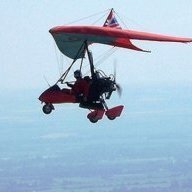I disagree. Either there is a cutoff for recreational aircraft under RAAus or there is not and it needs to be relatively measurable.
As others have said the current rules will leave you scratching your head if you are thinking in terms of energy at stall speed as 300kg doing 45knts is nothing like the energy 600kg doing 45knts yet both exist within the current RAAus administered area of recreational aviation.
BUT the weight and stall limits with max 2 occupants is at least a circle on the venn diagram of ALL aircraft that can be seen and measured ... and if it didn't come from a factory as a certifited/type accepted/approved design we have a builder declaration of stall speed.
But please DO NOT get CASA interested in testing and 'certifying' stall speed on homebuilts. They have that in the UK (along with noise testing of ANY/ALL prop changes) and trust me having lived thorugh it many times over we do not need to go there or Level4s/approved to inspect Level 2s and the required test pilots are going to have to charge a whole lot more for getting any homebuilt into the air.
But if you really want to focus on energy equivalence for your reference point on Recreational aircraft and you can get CASA to not require measurement/test/verify of the stall speed for homebuilts ... by all means use energy at stall speed as the logic as stall vs MTOW becomes a sliding scale.
Current thoughts/comments are on 750kg going 45knts ... on energy equivalnce that is:
- a 454kg aircraft stalling at 58knts - the Bushby Midget Mustang at 454kg stalls at 53knts
- a 523kg aircraft stalling at 54knts - the Pitts S1 with 160hp at 523kg stalls at 54knts
We are looking at a VERY different circle on the venn diagram of aircraft that fall within Recriaction/RAAus ... but if we go to energy and seating capacity I might enjoy building a really quite high performance MM1 in retirement ... 6 cyl jab engine should see it pootling along at close to 170knts in cruise.
In my opinion we have too many categories of RAAus already. I know them pretty well but I'm a legal and compliance nerd and have been hanging around ultralights for close to 30 years now. I would personally prefer that any movement into the new regulatory structure for SASOs and any increase in MTOW be done as an overall review and simplification looking at risk.
Get rid of control groups, get rid of historic old categories and allow a pathway for any factory built aircraft to migrate out of factory control/management of maintenance and modifications and base the requirements around use and risk exposure.
Give me a whiteboard and 30 min and I'll give you a simple single structure of aircraft, pilots and operating area restrictions that would make RAAus the most flexible in the world and I would challenge anyone to point out how it would be any greater risk exposure than we currently have.








